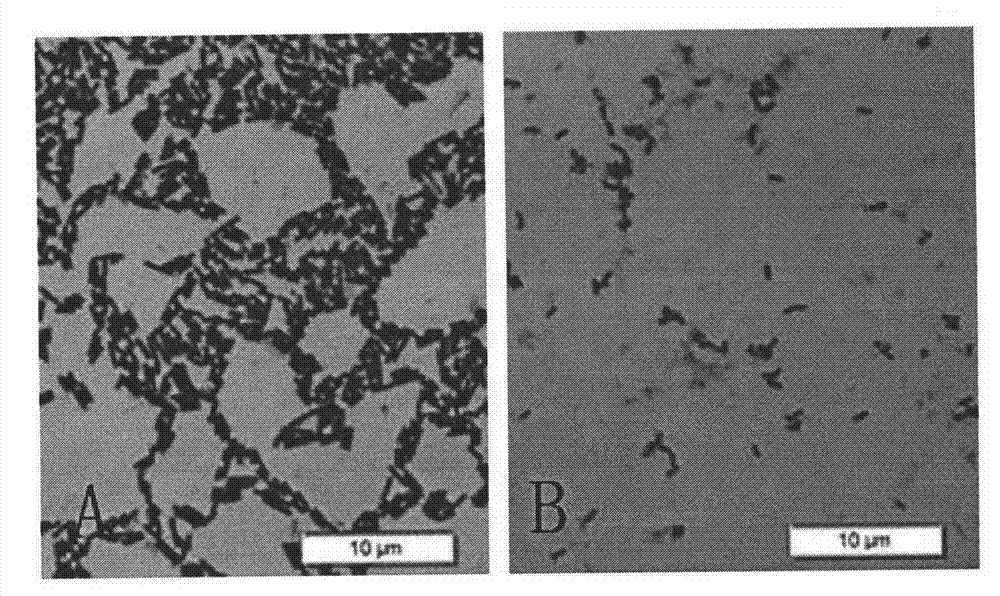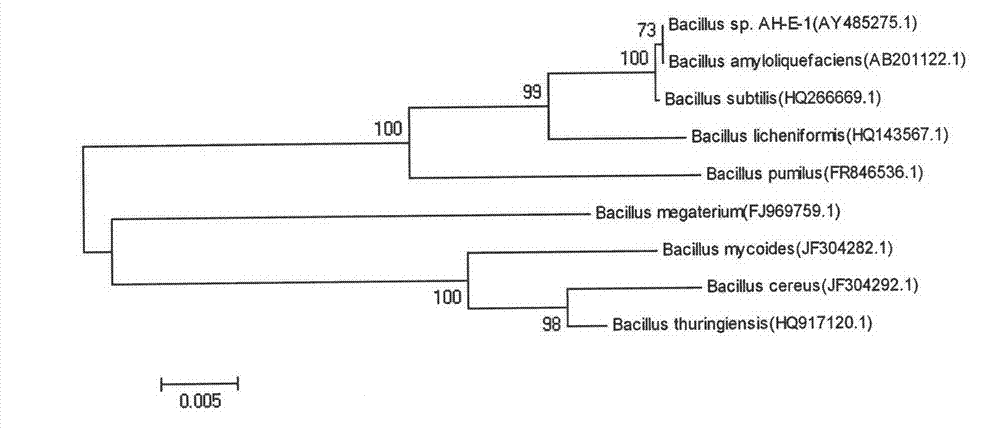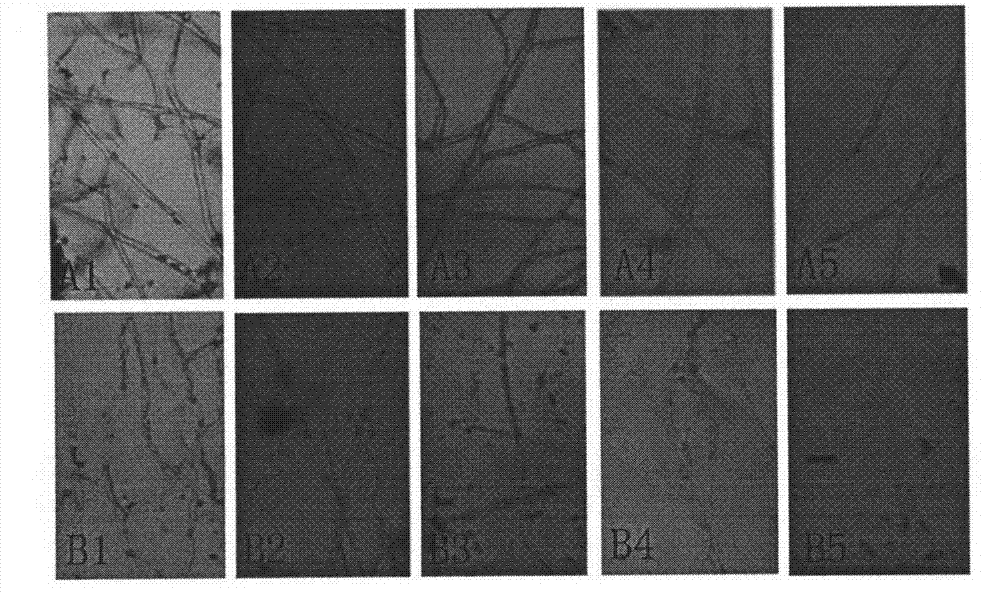Novel wide-spectrum bacillus resisting clinical and plant pathogenic fungi and application thereof
A plant pathogenic and antifungal technology, applied in the biological field, can solve problems such as no research and report on antifungal effects, and achieve the effects of obvious bacteriostatic effect, broad antifungal spectrum, and simple fermentation medium.
- Summary
- Abstract
- Description
- Claims
- Application Information
AI Technical Summary
Problems solved by technology
Method used
Image
Examples
Embodiment 1
[0018] Example 1: Identification of Bacteria
[0019] Bacillus sp.AH-E-1 was identified by morphological methods, traditional physiological and biochemical methods and 16s rRNA gene sequencing methods.
[0020] (1) Morphological observation
[0021] Streak Bacillus sp.AH-E-1 on the nutrient agar plate, and observe the colony morphology after culturing at 37°C for 24 hours. It can be seen that the colony is round, white, with dry surface and rough edges. After picking a single colony for staining, observe the morphology of the bacteria under a microscope, and it can be seen that ( figure 1 ): The strain is Gram-positive, with spores, the spores are oval or cylindrical, not obviously enlarged, the spores are mesozoic, and the ends of the bacteria are round.
[0022] (2) Physiological and biochemical identification
[0023] Bacillus cereus (CGMCC1.229), Bacillus subtilis (CGMCC1.892), Bacillus pumilus (CGMCC1.894), Bacillus amyloliquefaciens (CGMCC 1.1099), Bacillus thuringien...
Embodiment 2
[0029] Embodiment 2: the mensuration of antimicrobial spectrum of clinical pathogenic fungus
[0030]The antagonistic activity of Bacillus sp.AH-E-1 against various filamentous fungi was determined by simultaneous plate confrontation method. After culturing the fungal spore suspension on 10ml potato agar medium at 28°C for 5 days, take a colony block with a diameter of 7mm, and place it upside down on a sterile potato agar medium plate, so that the mycelium is in contact with the medium, and the colony 2cm away from the side of the dish. After inoculating a Bacillus sp.AH-E-1 strain 2cm away from the side of the dish in the direction facing the colony, culture it at 28°C for 5-7d. The control group was not inoculated with Bacillus. Determination of bacteriostatic degree, bacteriostatic degree=[(fungal colony area of control group−fungal colony area of treatment group) / fungal colony area of control group]×100%. Three repetitions were set up for each treatment.
[0031...
Embodiment 3
[0036] Embodiment 3: the mensuration of phytopathogenic fungi antimicrobial spectrum
[0037] The antagonistic activity of Bacillus sp.AH-E-1 against various filamentous fungi was determined by simultaneous plate confrontation method. After culturing the fungal spore suspension on 10ml potato agar medium at 28°C for 5 days, take a colony block with a diameter of 7mm, and place it upside down on a sterile potato agar medium plate, so that the mycelium is in contact with the medium, and the colony 2cm away from the side of the dish. After inoculating a Bacillus sp.AH-E-1 strain 2cm away from the side of the dish in the direction facing the colony, culture it at 28°C for 5-7d. The control group was not inoculated with Bacillus. Determination of bacteriostatic degree, bacteriostatic degree=[(fungal colony area of control group−fungal colony area of treatment group) / fungal colony area of control group]×100%. Three repetitions were set up for each treatment.
[0038] The i...
PUM
 Login to View More
Login to View More Abstract
Description
Claims
Application Information
 Login to View More
Login to View More - R&D
- Intellectual Property
- Life Sciences
- Materials
- Tech Scout
- Unparalleled Data Quality
- Higher Quality Content
- 60% Fewer Hallucinations
Browse by: Latest US Patents, China's latest patents, Technical Efficacy Thesaurus, Application Domain, Technology Topic, Popular Technical Reports.
© 2025 PatSnap. All rights reserved.Legal|Privacy policy|Modern Slavery Act Transparency Statement|Sitemap|About US| Contact US: help@patsnap.com



